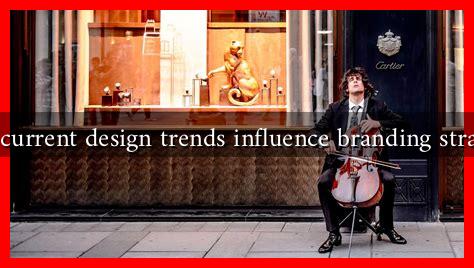-
Table of Contents
What Current Design Trends Influence Branding Strategies
In the fast-paced world of branding, design trends play a pivotal role in shaping how companies communicate their values and connect with their audiences. As consumer preferences evolve, so too must the strategies that brands employ to remain relevant and engaging. This article explores the current design trends that are influencing branding strategies, providing insights into how businesses can leverage these trends to enhance their brand identity and customer engagement.
The Rise of Minimalism
Minimalism has become a dominant design trend in recent years, characterized by simplicity, clean lines, and a focus on essential elements. This approach not only enhances visual appeal but also improves user experience. Brands like Apple and Google have successfully adopted minimalist design, emphasizing functionality and clarity.
- Clarity and Focus: Minimalist designs eliminate clutter, allowing consumers to focus on the core message.
- Timelessness: Simple designs tend to age better, ensuring longevity in branding.
- Increased Accessibility: Minimalism often leads to more accessible designs, catering to a broader audience.
According to a study by Adobe, 38% of users will stop engaging with a website if the content or layout is unattractive, highlighting the importance of a clean design in retaining customer interest.
Bold Typography and Custom Fonts
Typography is no longer just about readability; it has become a crucial element of brand identity. Bold, unique fonts can convey personality and emotion, making them a powerful tool in branding strategies. Brands like Netflix and Airbnb have embraced custom typography to create a distinctive voice.
- Brand Recognition: Unique fonts can enhance brand recall and recognition.
- Emotional Connection: Typography can evoke emotions, helping brands connect with their audience on a deeper level.
- Versatility: Custom fonts can be adapted across various platforms, ensuring consistency in branding.
For instance, the use of bold typography in advertising campaigns has been shown to increase engagement rates by up to 30%, according to a report by HubSpot.
Vibrant Color Palettes
Color plays a significant role in branding, influencing perceptions and emotions. Current trends lean towards vibrant, eye-catching color palettes that stand out in a crowded marketplace. Brands like Spotify and Instagram utilize bold colors to create a lively and engaging brand presence.
- Emotional Impact: Colors can evoke specific emotions, influencing consumer behavior.
- Brand Differentiation: Unique color schemes help brands stand out from competitors.
- Visual Storytelling: Colors can enhance storytelling, making brand narratives more compelling.
Research from Color Psychology indicates that color increases brand recognition by up to 80%, underscoring its importance in branding strategies.
Responsive and Adaptive Design
With the increasing use of mobile devices, responsive design has become essential for brands. This trend ensures that websites and applications provide an optimal viewing experience across various devices. Brands like Amazon and eBay have successfully implemented responsive design to enhance user experience.
- Improved User Experience: Responsive design ensures that users have a seamless experience, regardless of the device they use.
- SEO Benefits: Google favors mobile-friendly websites, improving search rankings.
- Increased Engagement: A well-designed mobile experience can lead to higher engagement and conversion rates.
According to Statista, mobile devices accounted for over 54% of global website traffic in 2021, emphasizing the need for brands to prioritize responsive design.
Conclusion
In conclusion, current design trends such as minimalism, bold typography, vibrant color palettes, and responsive design are significantly influencing branding strategies. By embracing these trends, brands can enhance their identity, improve user experience, and foster deeper connections with their audiences. As the landscape of branding continues to evolve, staying attuned to these design trends will be crucial for businesses aiming to thrive in a competitive market.
For further insights into branding and design trends, consider exploring resources like Adobe’s Creative Cloud or HubSpot’s Marketing Statistics.


